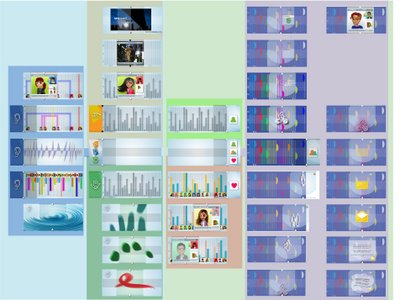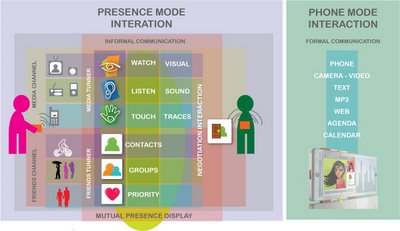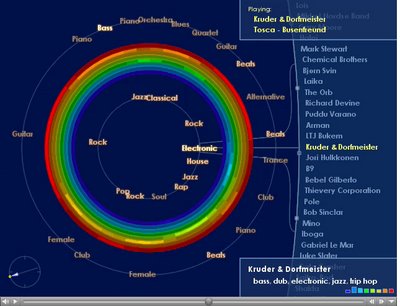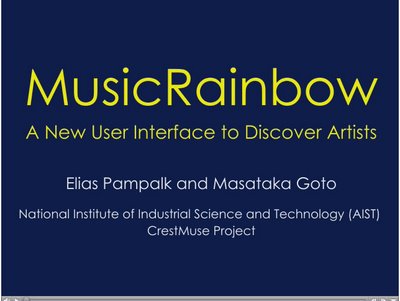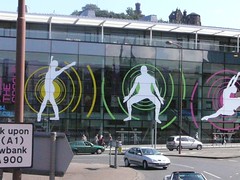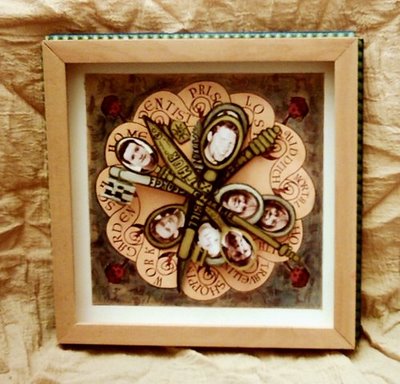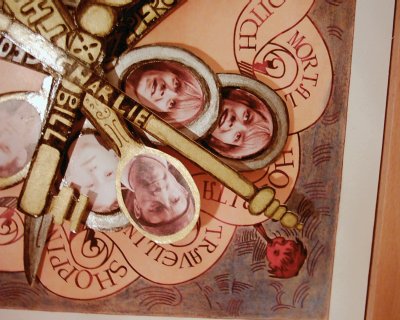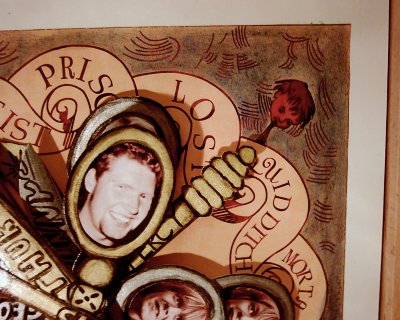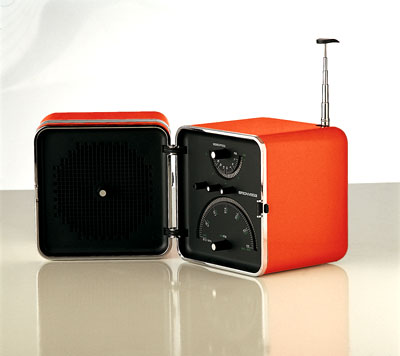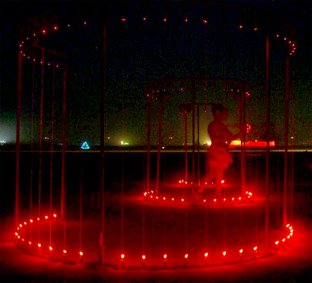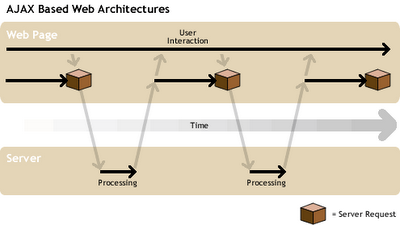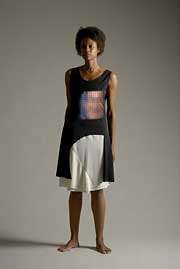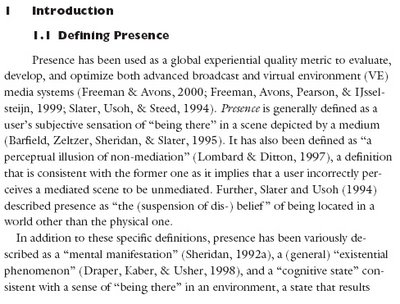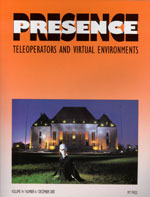30 November 2006
29 November 2006
28 November 2006
14 November 2006
11 November 2006
09 November 2006
08 November 2006
07 November 2006
tangible interface
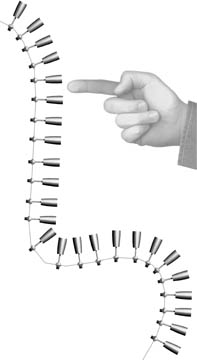
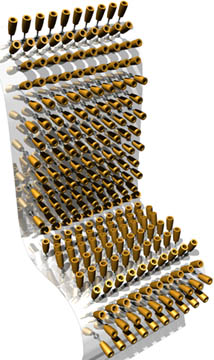
Super Cilia Skin is a literal membrane separating a
computer from its environment. Like our skin, it is
haptic I/O membrane that can sense and simulate
movement and wind flow. Our intention is to have it
be universally applied to sheath any surface. As a
display, it can mimic another person�s gesture over a
distance via a form of tangible telepresence. A
hand-sized interface covered with Super Cilia Skin
would produce subtle changes in surface texture that
feel much like a telepresent "butterfly kiss."
06 November 2006
03 November 2006
29 October 2006
24 October 2006
Ben-Q Siemens Black Boz concept phone
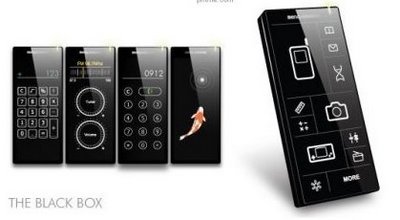
Unlike previously mentioned, BenQ is still making phones in Asia, just no longer in the German market. This is one of the concept phones being worked on—the Black Box. No keypads, no buttons, just a big ass touchscreen. From the initial pictures it looks like the interface changes on the fly. I'm digging the black minimalist design overall. It will probably never see the light of day as an actual product, but it is still cool to look at, nonetheless. – Travis Hudson
22 October 2006
MPOP and presence by observation
MPOP and presence by observation
Presence becomes interesting for communication systems when it spans a number of different communication channels. The idea that multiple communication devices can combine state, to provide an aggregated view of a user's presence has been termed Multiple Points of Presence (MPOP). MPOP becomes even more powerful when it is automatically inferred from passive observation of a user's actions. This idea is already familiar to instant messaging users who have their status set to "Away" (or equivalent) if their computer keyboard is inactive for some time. Extension to other devices could include whether the user's cell phone is on, whether they are logged into their computer or perhaps checking their electronic calendar to see if they are in a meeting or on vacation. For example, if a user's calendar was marked as out of office and their cell phone was on, they might be considered in a "Roaming" state.
MPOP status can then be used to automatically direct incoming messages across all contributing devices. For example "Out of office" might translate to a system directing all messages and calls to the user's cell phone. The status "Do not disturb" might automatically save all messages for later and send all phone calls to voicemail.
XMPP, discussed below, allows for MPOP by assigning each client a "resource" (a specific identifier) and a priority number for each resource. A message directly to the user's ID would go to the resource with highest priority, although messaging a specific resource is possible by using the form user@domain/resource.
[edit]
Watchers
Users have the potential to publish different presence states depending on who the communicator (or watcher) is. A worker may only want colleagues to see detailed presence information during office hours, for instance. Some users may want to only publish information to a select few. Basic versions of this idea are already common in instant messaging clients as a 'Blocking' facility, where users can appear as unavailable to selected watchers.
[edit]
Commercial products
Presence, particularly MPOP, requires collaboration between a number of electronic devices (for example IM client, home phone, cell phone and electronic calendar) and the presence services each of them are connected with. To date, the most common and wide scale implementation use closed systems, with a SPOP (Single Point of Presence, where a single device publishes state). Some vendors have upgraded their services to automatically logout connected clients when a new login request reaches the server from a newly connecting different device. For presence to universally work with MPOP support, multiple devices must be able to not only intercommunicate among each other, the status information must also be appropriately handled by all interoperable connected other presence services and the MPOP scheme for their clients.
2.5G and even more so 3G cell phone networks can support management and access of presence information services for mobile users cell phone handsets.
In the workplace, private messaging servers offer the possibility of MPOP within a company or work team.
Presence becomes interesting for communication systems when it spans a number of different communication channels. The idea that multiple communication devices can combine state, to provide an aggregated view of a user's presence has been termed Multiple Points of Presence (MPOP). MPOP becomes even more powerful when it is automatically inferred from passive observation of a user's actions. This idea is already familiar to instant messaging users who have their status set to "Away" (or equivalent) if their computer keyboard is inactive for some time. Extension to other devices could include whether the user's cell phone is on, whether they are logged into their computer or perhaps checking their electronic calendar to see if they are in a meeting or on vacation. For example, if a user's calendar was marked as out of office and their cell phone was on, they might be considered in a "Roaming" state.
MPOP status can then be used to automatically direct incoming messages across all contributing devices. For example "Out of office" might translate to a system directing all messages and calls to the user's cell phone. The status "Do not disturb" might automatically save all messages for later and send all phone calls to voicemail.
XMPP, discussed below, allows for MPOP by assigning each client a "resource" (a specific identifier) and a priority number for each resource. A message directly to the user's ID would go to the resource with highest priority, although messaging a specific resource is possible by using the form user@domain/resource.
[edit]
Watchers
Users have the potential to publish different presence states depending on who the communicator (or watcher) is. A worker may only want colleagues to see detailed presence information during office hours, for instance. Some users may want to only publish information to a select few. Basic versions of this idea are already common in instant messaging clients as a 'Blocking' facility, where users can appear as unavailable to selected watchers.
[edit]
Commercial products
Presence, particularly MPOP, requires collaboration between a number of electronic devices (for example IM client, home phone, cell phone and electronic calendar) and the presence services each of them are connected with. To date, the most common and wide scale implementation use closed systems, with a SPOP (Single Point of Presence, where a single device publishes state). Some vendors have upgraded their services to automatically logout connected clients when a new login request reaches the server from a newly connecting different device. For presence to universally work with MPOP support, multiple devices must be able to not only intercommunicate among each other, the status information must also be appropriately handled by all interoperable connected other presence services and the MPOP scheme for their clients.
2.5G and even more so 3G cell phone networks can support management and access of presence information services for mobile users cell phone handsets.
In the workplace, private messaging servers offer the possibility of MPOP within a company or work team.
Presence information
Presence information
From Wikipedia, the free encyclopedia
Jump to: navigation, search
In computer and telecommunications networks, presence information is a status indicator that conveys ability and willingness of a potential communication partner - for example a user to communicate. A user's client provides presence information (presence state) via network connection to a presence service, which is stored in what constitutes his personal availabilty record (called a presentity) and can be made available for distribution to other users (called watchers) to convey his availability for communication. Presence information has wide application in many communication services and is one of the innovations driving the popularity of instant messaging or recent implementations of voice over IP clients.
From Wikipedia, the free encyclopedia
Jump to: navigation, search
In computer and telecommunications networks, presence information is a status indicator that conveys ability and willingness of a potential communication partner - for example a user to communicate. A user's client provides presence information (presence state) via network connection to a presence service, which is stored in what constitutes his personal availabilty record (called a presentity) and can be made available for distribution to other users (called watchers) to convey his availability for communication. Presence information has wide application in many communication services and is one of the innovations driving the popularity of instant messaging or recent implementations of voice over IP clients.
Schmap Milan guide Photo Inclusion
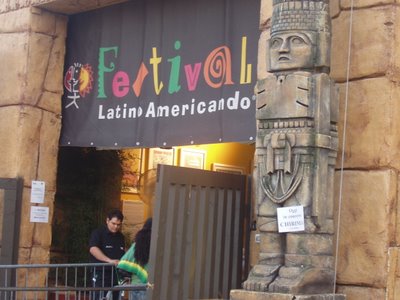
I am delighted to let you know that one of my photos has been selected for inclusion in the newly released second edition of Schmap Milan Guide.To have a look check the link.
www.schmap.com/photos/p=95954617N00/c=SD1303136
If you want to check the guide on the sidebar you will find a widget to Schmap...I invite you to have a look.
21 October 2006
19 October 2006
11 October 2006
The Hug Shirt

The Hug Shirt (F+R Hugs) is a shirt that allows people to exchange the physical sensation of a hug over distance. Embedded in the shirt there are sensors that feel the strength of the touch, the skin warmth and the heartbeat rate of the sender and actuators that recreate the sensation of touch, warmth and emotion of the hug to the shirt of the distant loved one.
10 October 2006
pixelroller
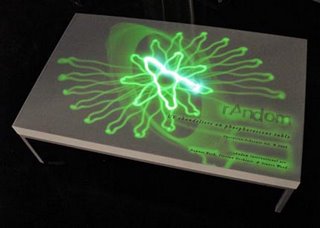
The former RCA-students Ortkrass, Wood and Koch - working together under the lable Random International - have been playing around with light for quite a while (the pixelroller in all its forms is well known to all of us): their latest devlopment - just presented at the Salone di Mobile in Milan - is a more poetic peace of art, again related to light and "leaving traces": the Pendant Lights
Serendipity
Serendipity: to make discoveries, by accident and sagacity, of things not in quest of.
For other uses, see Serendipity (disambiguation).
For other uses, see Serendipity (disambiguation).
Plesiochronous

The term Plesiochronous is derived from the Greek plesio, meaning near, and chronos, time, and refers to the fact that plesiochronous systems run in a state where different parts of the system are almost, but not quite perfectly, synchronised.
According to ITU-T standards, corresponding signals are plesiochronous if their significant instants occur at nominally the same rate, with any variation in rate being constrained within specified limits. In general, plesiochronous systems behave similarly to synchronous systems, except that they must have some means to cope with "sync slips", which will happen at intervals due to the plesiochronous nature of the system.
The most common example of a plesiochronous system design is the Plesiochronous Digital Hierarchy networking standard.
The modern tendency in systems engineering is towards using systems that are either fundamentally asynchronous (such as Ethernet), or fundamentally synchronous (such as SDH), and layering these where necessary, rather than using a mixture between the two in a single technology.
Synchronicity
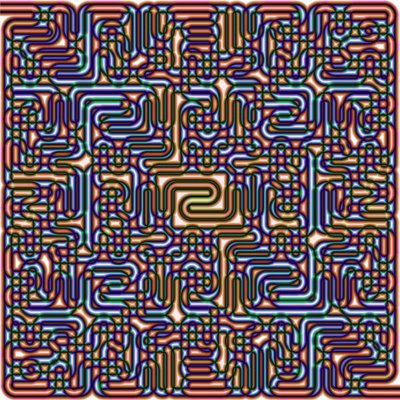
Synchronicity is a word coined by the Swiss psychologist Carl Jung to describe the "temporally coincident occurrences of acausal events." Jung spoke of synchronicity as an "acausal connecting principle" (i.e. a pattern of connection that cannot be explained by direct causality).
Plainly put, it is the experience of having two (or more) things happen coincidentally in a manner that is meaningful to the person or persons experiencing them, where that meaning suggests an underlying pattern.
It differs from coincidence in that synchronicity implies not just a happenstance, but an underlying pattern or dynamic that is being expressed through meaningful relationships or events. It was a principle that Jung felt encompassed his concepts of archetypes and the collective unconscious [1], in that it was descriptive of a governing dynamic that underlay the whole of human experience and history — social, emotional, psychological, and spiritual. Jung believed that many experiences perceived as coincidence were due not merely to chance, but instead, suggested the manifestation of parallel events or circumstances reflecting this governing dynamic. [2]
One of Jung's favourite quotes on Synchronicity was from Through the Looking-Glass by Lewis Carroll, where the White Queen says to Alice: "It's a poor sort of memory that only works backwards". [3]
09 October 2006
08 October 2006
Nurturing Technologies in the Domestic Environment:

Overview:
This workshop will explore the potential for technology to support the experience of being nurtured in the home. Emerging practices (observed or imagined) around nurturance in the home will be explored using the lenses of architectural space and social context. These practices will inform proposals for the design of nurturing technology for a variety of domains including healthcare, entertainment, education, spiritual practice, and communication. Negative examples of invasive or harmful domestic technologies are also welcome, particularly if they suggest positive corrective possibilities. The goals of the workshop are to 1) gain an understanding of emerging practices of using technology for nurturance and 2) propose designs for technology that can nurture people.
For additional details, including proposed activities, read the complete proposal.




